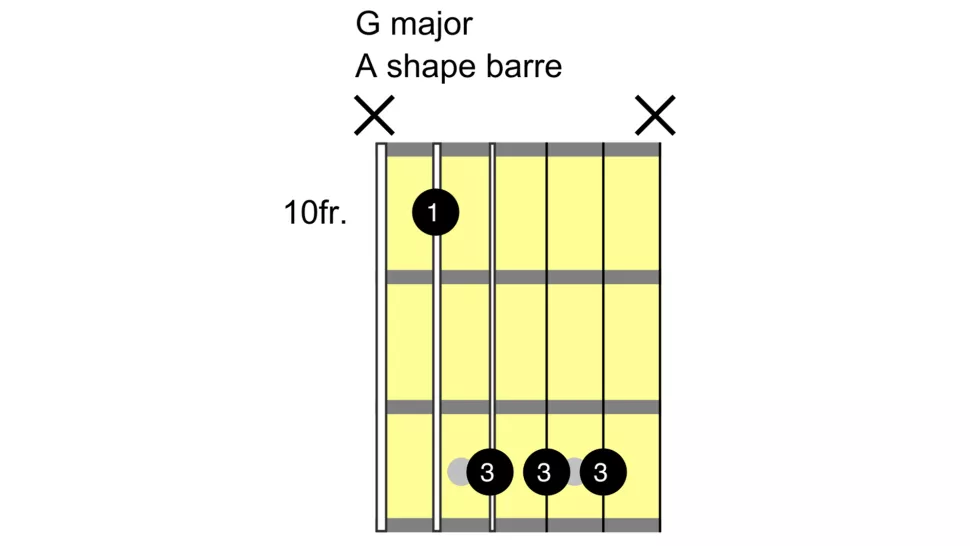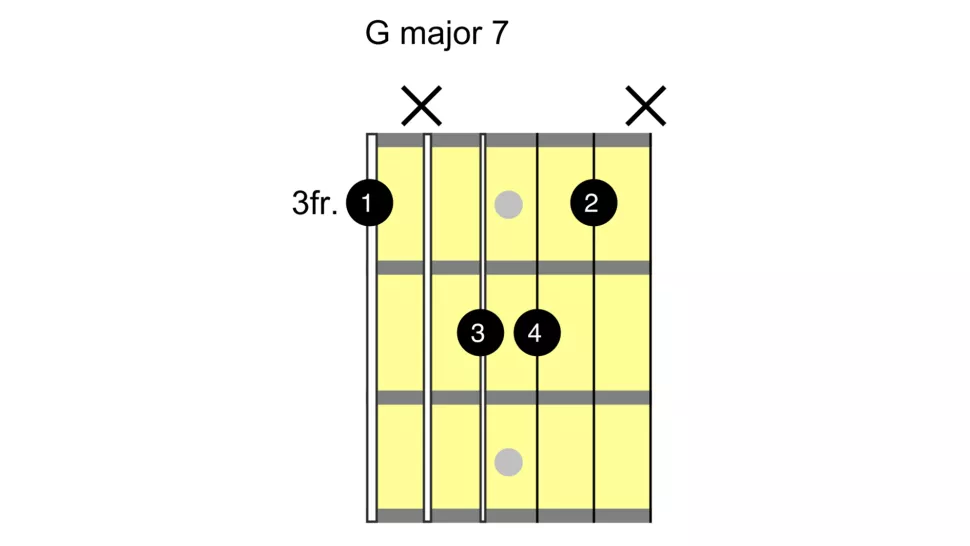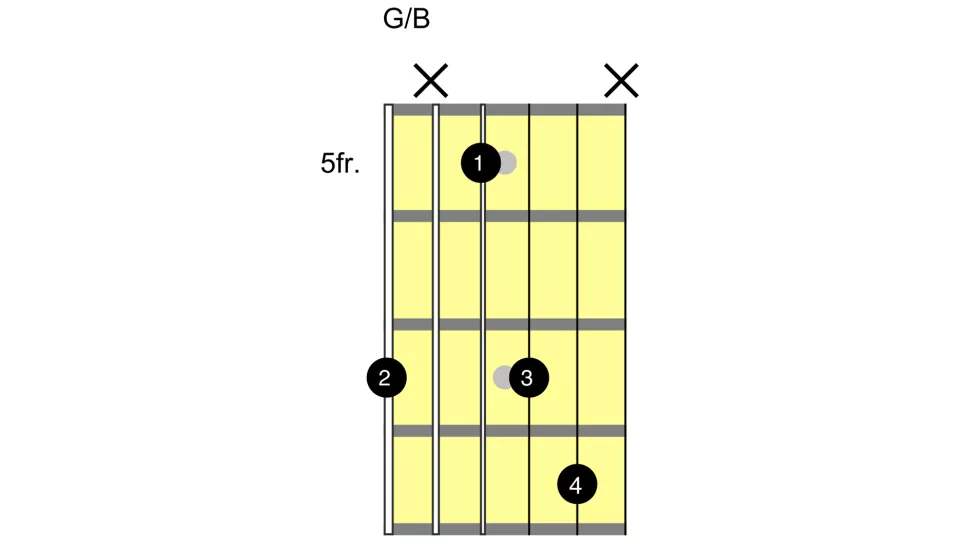How to Play G Guitar Chord?

G-Chord is one of the most accessible keys to play on guitar due to its simple open chord shapes. Five of the seven chords in this key can be played using uncomplicated available forms, namely G, Am, C, D, and Em, which makes mastering the G chord essential.
Whether you’re playing Ed Sheeran’s Perfect, AC/DC’s, You Shook Me All Night Long or Aretha Franklin’s Respect; there’s always a guitar chord shape that fits. In this guide, we’ll explore the open chord shapes for playing the G chord on the guitar and then move on to more advanced barre chord alternatives. Finally, we’ll delve into some exciting substitutes for the G chord, such as G7, G central 7, and G/B.
How to Play the G Chord On Guitar: Open the G

Cc: imusicschool
To play the open G chord on guitar, place your third finger on the third fret of the high E string, your second finger on the third fret of the low E string, and your first finger on the second fret of the A string. Another option is to use three fingers, 2, 3, and 4, depending on your preference and the requirements of the other chords in the song you’re playing.
For example, alternate fingering is necessary for Guns N’ Roses’ Paradise City due to the following C and Fadd9 chords. At first, using fingers 1, 2, and 3 might be more accessible and more suitable for most songs, but taking breaks is crucial if any discomfort arises.
Initially, stretching between the two E strings can be challenging, and avoiding accidentally touching the other strings between lines may be tricky. Nonetheless, with practice and patience, it becomes easier.
Play the G Chord on Guitar: Open G (Four-Finger Version)

Cc: imusicschool
An alternative way to play the open G chord on guitar involves using all four fingers. Despite appearing more challenging, it requires less finger stretching, and the proximity of the third and fourth fingers allows them to support each other.
This version of the full G chord is utilized in Wonderwall by Oasis. To play a G5 power chord, remove your first finger from the standard G chord shape to mute the A string.
This modification results in AC/DC’s signature G5 power chord, which is useful for transitioning between G and Cadd9- two major chords because of their similar shapes.
Play the G Chord on Guitar: G Major Barre Chords

Cc: imusicschool
To play the E shape G-major barre chord on guitar, position your first finger across the third fret, barring all the strings. Next, place your second finger on the fourth fret of the G string, your third finger on the fifth fret of the fifth string of the A-line, and your fourth finger on the fifth fret of the D string.
This chord shape is movable, meaning you can move it up and down the fretboard to play a few different ways and chords. It may be easier to play the body on higher frets at first. Although changing the position will produce a different chord than G, you can use it to familiarize yourself with the shape and master it.

Cc: imusicschool
To play the A-shape barre chord for G on guitar, position your index finger across all the strings on the 10th fret, barring them. However, it’s essential to avoid plucking the low E string as it can create difficulty in playing the chord cleanly without muting the high E string. Though it’s crucial to improve your technique on first chords by mastering this skill, it’s worth noting that the chord sounds decent without the high E string.

Cc: imusicschool
Another way to play the A-shape barre chord for G on guitar involves using your third finger to bar from the D to the B string. While this method of guitar playing may be more challenging initially, it can be quicker once you become proficient.
Play the G-Chord on Guitar: G-Chord Variations

Cc: imusicschool
In addition to the four-finger G chord mentioned, G7 can be a flavorful substitute for a standard six strings G chord. When playing a song in the key of C major, G7 is a reliable option. However, in other situations, it’s best to trust your ears and decide if it fits the song’s context.
Playing G7 becomes more accessible if you’ve played G major with fingers 2, 3, and 4, as you’ll need your first finger to the open position to play fret one on the high E string.

Cc: imusicschool
Consider using the G major seven chords for a more advanced substitution of the G chord. This jazzy chord adds a touch of sophistication to songs in the key of G and is commonly used in covers of artists such as Stevie Wonder and Bruno Mars. Trust me, if Bruno Mars is doing it, then it’s something everyone should be doing.
However, some jazz players use guitar chords with a more advanced technique of hooking their thumb over the neck to play the bass note. We have provided a pick-fingering method more suitable for guitarists with smaller hands.
Another difference in the G chord is the G/B, referred to as a first inversion. This chord can be played in any position where you would play a regular G major chord. However, because the lowest note best g chord is not G, it gives a unique flavor to the chord that can be beneficial in specific musical contexts. It’s worth noting that, unlike some primary chord shapes, G/B sounds great on distorted guitar.
Although it may require some stretching, it’s worth trying this chord. If playing the B string with your third finger is too tricky, try the root note using your fourth finger instead and leave out the B string.
Denny’s Infamous Lesson Library
Beginner guitarists may find this useful as it makes your guitar journey a breeze. Look at the best guitar players in the world, and you’ll notice they have one thing in common. They play guitar by ear. Since 1969 Denny Zager‘s taught millions of people to play the guitar correctly using his internationally acclaimed “Play-By-Ear” guitar method that shows you how to tap into that part of your brain scientists, say we rarely use “Play-By-Ear” as the pros do. The Zager Guitar Lesson Library gives you the opportunity to learn guitar using a revolutionary guitar system one-on-one with a true guitar master.
Frequently Asked Questions
To play a G chord on guitar, place your third finger on the third fret of the low E string, second finger on the second fret of the A string, and ring finger and fourth finger on the third fret of the high E string. Strum all the strings except for the sixth string.
A G chord on the guitar can be played with either three or four fingers, depending on the fingering technique used. The most common way is to use four fingers, but some guitarists prefer to use only three fingers.
